Welcome to Orchard Maternity Ward
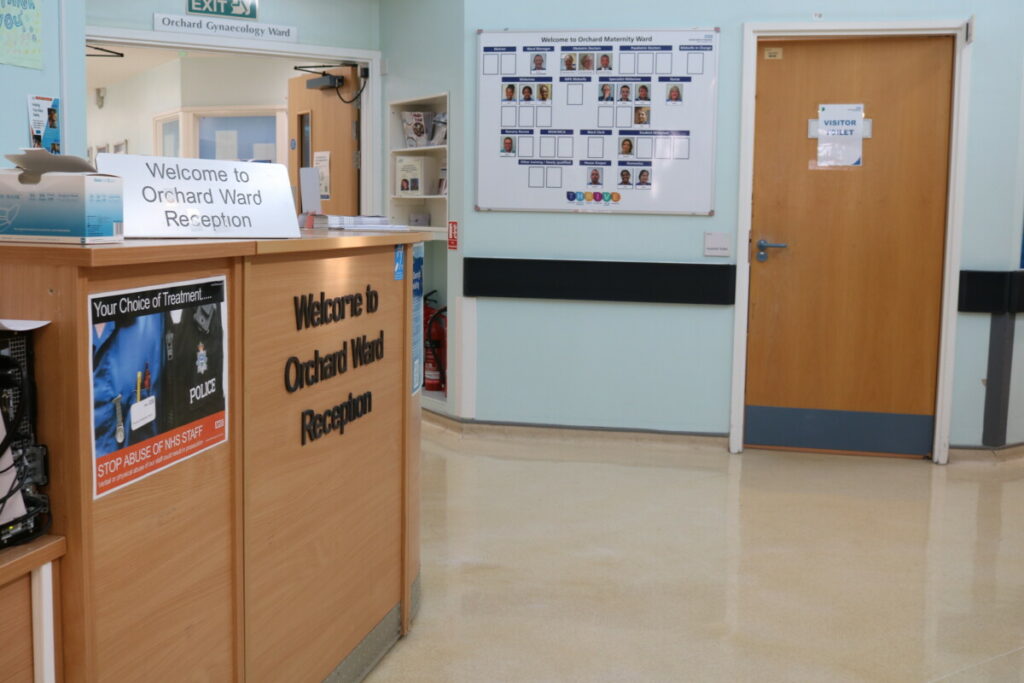
Translations
To translate the text on the website that is currently in English to other languages, please click on the black ‘Show Accessibility Toolbar’ button at the top of the page.
Once this is done, click on the dark grey square with the letter symbols to search for your preferred language.

Contents
- Frequently asked wuestions
- Useful information
- Meals and refreshments
- Discharge home
- Feedback
- Feeling safe
- Baby tagging information
- Infant feeding
- Responsive Breastfeeding
- How to breastfeed
- How to tell if baby is feeding well
- Hand expressing
- Using an electric breast pump
- Formula feeding
- Responsive bottle feeding
- Safer sleeping
- Support in the community
Congratulations on your new baby and welcome to our ward.
Our staff pride themselves in the care they provide.
They are here to support you with any questions or queries you may have.
Visiting
Please note visiting across both sites is subject to change based on Government guidance and infection rates within the local area.
More information can be found on the Visitors at our hospitals page.
Bedfordshire Hospitals Maternity Services FAQ
Q: Can I have someone stay with me overnight?
A: Yes, we welcome one birth partner to stay overnight to support bonding as a family and to provide assistance to the mother/birthing person. Unfortunately we cannot provide a bed for the overnight visitor, nor can we provide food or washing facilities – they would be encouraged to take a break from the hospital and return home to do this. While staying overnight we request birth partners wear a yellow wristband and sign a visitor’s agreement, please request this from staff.
This is to ensure we follow Health and Fire Safety Regulations.
Q: Can I bring my children to the ward?
A: Yes, siblings of the newborn are welcome between 3pm and 8pm. We ask that they are supervised by one other responsible adult and not left alone with the mother/birthing person.
Q: Can other visitors come to see me on the ward area?
A: You are welcome to have 2 visitors between 3pm and 8pm, this includes your birth partner and one other adult visitor. We try to minimise the flow of people through the ward due to infection control and available space.
Useful information
How to contact us:
The telephone number for the ward is 01234 792070
Assistance:
Please ring the call bell provided next to your bedside if you require assistance. There may be a slight delay in answering your bell at busy time, staff will be with you as soon as possible. If you have a birth partner with you, they are encouraged to assist you, where appropriate.
Pain relief:
Staff will perform drug rounds at regular intervals but please do not hesitate to inform us if you require pain relief in between these times.
Mobilising around the ward:
Anti-slip socks can be given on admission to the ward. Please use these or sensible foot wear for your safety.
Please do not walk around with your baby in your arms. This is for the safety of both you and baby whilst on our ward. You are encouraged to mobilise whilst on the ward, please use the cots provided to move around with your baby. Staff will support you with this.
Clean linen:
Available on request for you and your baby.
Smoking and vaping is not permitted on site.
Please can we ask that parents do not leave their baby alone if going off the ward.
Meals and refreshments
Housekeeping staff will take your meal orders and meals will be served to your bedside.
Please let us know of any dietary requirements/allergies.
- Breakfast: 8am to 9.15am
- Lunch: 12pm to 1pm
- Dinner: 5.30pm to 6.30pm
Water, cereal, toast and hot drinks are available outside of mealtimes. Please speak to staff.
Lunch box available from the main kitchen between 8pm and 7am.
If your baby is on the NNU, and a hot meal has been ordered, it will be served to your bedside. If you will not be present at mealtimes please discuss with our housekeeping staff to arrange an alternative.
Please note, we are unable to provide food for birth partners and visitors. Refreshments are available to purchase from the Hospital Charity Shop or the vending machines on the Ground Floor. Hot food is available from The Bistro or The Swannery Restaurant. There is also a variety of local shops available.
Prior to discharge home – following birth
Before you are discharged home from the ward, there are a few routine checks that staff will need to perform.
Maternal postnatal checks:
These happen daily whilst you are in hospital to check your physical and emotional wellbeing. It also gives you the opportunity to discuss any concerns you may have.
Newborn Infant Physical Examination (NIPE):
This is performed by specially trained midwives and paediatricians. It is screening that is offered to every baby in the UK and involves examination the baby’s heart, hips, eyes and genitalia.
Hearing screening:
Your baby will have their hearing screened during your time on the ward. Occasionally this needs rechecking which will be arranged by the hearing team.
Paper work:
You will be given two purple books, one for you and one for your baby, to take home. These are for your postnatal care and will be needed by your community midwife. They contain a lot of useful information about the postnatal period for you and baby.
Medication:
You will be given any medication that you may require as well as an explanation of how to take them. Please note, there may be a delay at times. We encourage you to wait until you have your medication before leaving.
Discharge discussion:
This provides lots of useful information such as registering the birth of your baby and community midwife/health visitor visits, pelvic floor exercises, feeding your baby, bed sharing, travel safety, signs of an ill baby and information relating to cot death. If there is anything specific to your care, outside of these topics, your midwife will discuss them with you individually.
This information is also available on our website.
Friends and Family Test
We welcome your feedback in relation to your pregnancy journey and the care we have provided.
Your feedback allows us to shape our service, make changes with a “you said, we did” approach and recognition of staff who have provided supportive and exceptional care.
Use the below link or QR code on your personal device or ask for one of our devices on the ward which are available for you.
Complete the FFT survey online
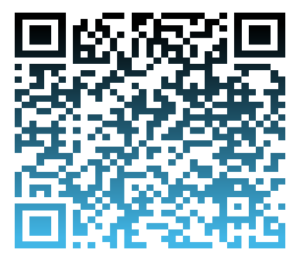
You can provide feedback at any point during your pregnancy, however, in particular, we actively invite feedback from your antenatal, birth, post-natal (ward) and post-natal (community) experiences.
Feeling safe
After having a baby, your body and hormones will go through some big changes, and it can be normal to have a change in mood.
If you or your support network feel that this is a concern, we will support you to get help.
If you need to tell us anything in confidence, we can support you to get the help that you need.
We have a Safeguarding and Perinatal Mental Health team who can help. Visit the Perinatal Mental Health and Emotional Wellbeing in Pregnancy page for more information.
Baby tagging information guide for families
Download the family information guide to learn everything you need to know about the Baby Tagging System (BTS) used in this hospital.
What you’ll learn:
- What a Baby Tagging System (BTS) is
- Why it’s used in this hospital
- How it safeguards your baby
- What will happen during your stay
Visit the guide online or scan the QR code on your personal device:
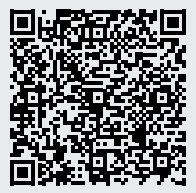
Infant Feeding
We have an Infant Feeding Team, which includes midwives, infant feeding support workers and peer support workers who are available for support with feeding.
How to tell your baby is hungry
Your baby is born equipped to give you signals that they are ready for a feed.
If you offer your baby a feed at this time, they will be much more likely to feed effectively than if you wait until they cry.
Cues to look for include moving their eyes, wriggling or waving, rooting, sucking fists, etc.
Responsive breastfeeding
Responsive breastfeeding is when a mother responds to her baby’s cues, as well as her own desires to breastfeed.
Feeds are not just for nutrition, they are for love, comfort and reassurance between a mother and her baby.
You cannot overfeed a breastfed baby, so enjoy that special time together.
Breastfeeding responsively means –
- Offering the breast in response to baby’s feeding cues
- Offering the breast if baby is distressed, fractious or lonely
- Offering the breast if baby is unwell or to reassure if unsettled
- Offering the breast to meet mothers needs such as wanting to sit, rest and have a cuddle with her baby
Breastfeeding is the healthiest way to feed your baby
Breastfeeding is good news for your baby and you.
Breast milk is tailor-made for your baby. It boosts your baby’s ability to fight illness and infection – babies who are not breastfed are more likely to get diarrhoea and chest infections.
Exclusive breastfeeding is recommended for around the first six months and alongside solid foods thereafter.
Breastfeeding also lower’s a mother’s risk of breast cancer and may reduce the risk of ovarian cancer too.
Keeping your baby close will help you to respond to their needs for food, love and comfort.
How to breastfeed
Breastfeeding is something you are you baby learn together, and, like anything new, you need to get the hang of it. Here’s how:
- Hold your baby’s whole body close with their nose level with your nipple. Make sure their head and body are in a line and facing you, so they are not twisting their head or body awkwardly. Support your baby along their back and shoulders rather than their head so they can move their head freely to attach to your breast.
- Let your baby’s head tip back a little so that their top lip can brush against your nipple. This should help your baby to make a wide open mouth.
- When your baby’s mouth opens wide, their chin should be able to touch your breast first, with their head tipped back so that their tongue can reach as much breast as possible.
- With their chin touching your breast and their nose clear, their mouth should be wide open. You will see much more of the darker skin of your nipple above your baby’s top lip than below their bottom lip. Your baby’s cheeks will look full and rounded as they feed.
For more information on breastfeeding positions, visit the NHS Start for Life website.
You do not need to eat any special foods when you are breastfeeding but it is a good idea for you, just like everyone, to eat a healthy diet.
There is additional information on Orchard Ward regarding infant feeding and support with feeding your baby.
How to tell if your baby is feeding well
Signs that your baby is feeding well
- Your baby has a large mouthful of breast.
- It doesn’t hurt when your baby feeds (although the first few sucks may feel strong).
- Your baby rhythmically takes long sucks and swallows.
- Your baby finishes the feed, appears content and satisfied after feeds and comes off the breast on their own. Your breasts and nipples should not be sore.
Vitamin D
- Breastfed babies up to 12 months old should be given a daily supplement of 8.5 to 10mcg of Vitamin D (340 – 400 IU/d).
- It is recommended that all breastfeeding women / birthing people take a daily supplement of Vitamin D (400 IU/d).
How do I know my baby is getting enough milk?
- Lots of mums wonder if their baby’s feeding well and getting enough – especially in the first few days, but it’s very rare that mums don’t make enough breastmilk for their babies. It may just take a bit of time before you feel confident that you are providing enough milk.
- Generally, your baby will let you know if they are not getting what they want; wet and dirty nappies are also a good indication, as is hearing your baby swallow.
- Your baby should be back to birth weight by two weeks and then continue to gain weight.
- Let your baby guide you as to how often to feed. Responsive breastfeeding recognises that feeds are not just for nutrition, but also for love, comfort and reassurance between baby and mother. It is not possible to overfed a breastfed baby.
Your baby’s nappies
- In the first 48 hours, your baby is likely to have only 2 or 3 wet nappies. Wet nappies should then start to become more frequent, with at least 6 to every 24 hours from day 5 onwards.
- At the beginning, your baby will pass a black tar-like poo (called meconium).
- By day 3, this should be changing to a lighter, loose, greenish poo.
- From day 4 and for the first 4 to 6 weeks, your baby should pass at least 2 yellow poos a day.
- If your baby has no pooed in the last 24 to 48 hours, speak to your midwife or health visitor as this may mean they aren’t getting enough milk.
For more information, visit the NHS Start for Life website.
Hand expressing your breast milk
Why hand express?
- To collect colostrum prior to baby’s birth
- To help with attachment
- To relieve engorgement, blocked ducts or mastitis
To collect milk for your baby
Setting the scene
- Ensure you are somewhere comfortable, warm and where you won’t be disturbed.
- Have your baby nearby, or if not possible then have photos of your baby or something that has their scent.
This preparation will encourage your hormones to flow, helping milk to be let down.
Gently massage your breast with heel of hand, clenched fist or combing motion to aid hormone release. Some women find rolling the nipple between finger and thumb is also beneficial.
Make a C-shape with thumb and index finger – work back from your nipple until you find a change in texture, approximately 2-3cm from the base of the nipple.
Compress and release the breast in a steady rhythm until the milk starts to flow. Move your hand around the breast and repeat, before moving on to the other breast.
For more information, visit the NHS Expressing milk website page.
This can:
- Tempt baby to feed and/or provide colostrum if he is a little sleepy in the first days
- Stimulate milk production and provide colostrum for sick/preterm babies on the neonatal unit
- Help to soften the breast by removing a little milk if they have become full
- To self-manage blocked ducts and prevent and reduce symptoms of mastitis
Using an electric breast pump
Breast pump packs are provided in the nursery behind the midwives station. They are single use only and can be disposed of in the yellow bins after using. If you require assistance to be shown how to use the breast pump please ask staff on the ward. The pump can be taken to your bedside for your comfort. It is advised that you hand express before and after using a breast pump.
If you are expressing your breast milk during your stay on the ward it is recommended that your milk is only kept in the hospital fridge for 24 hours. It needs to be clearly labelled with:
- Your name
- Date of expressing
- Time of expressing
Please ask staff for labels.
Unfortunately any milk that is not labelled correctly will be discarded.
Formula feeding
All our midwives and Maternity Support Workers (MSW’s) are trained to help you feed your baby so please ask for assistance if you require it.
We do not routinely provide formula milk on Delivery Suite or on the postnatal ward if it is the parent’s intention to formula feed their baby.
This is because we recognise there are now many more brands of milk out on the market and it is not possible to stock every one, however we respect that parents should be able to give their baby the milk of their choice.
Parents must bring in the ready-made ‘first’ or ‘newborn’ milk (some brands have starter packs which some may find helpful).
If parents require guidance on brands, more information is available on the Infant milks for parents & carers website page by First Steps Nutrition Trust.
Formula will still be available if there is a clinical indication to supplement or it is required for individual family’s circumstances.
Responsive bottle feeding and what formula to choose
- Feed your baby when they show signs of being hungry. Cues can include your baby moving their head, opening their mouth and sucking on their fingers. Crying is the last sign of wanting to feed, so try and feed your baby before they cry. For information on preparing infant formula and sterilising bottles visit the Guide to bottle feeding by UNICEF.
- Hold your baby close in a semi-upright position so you can see their face and look into their eyes. Talk to your baby during feeds to help reassure them. It can be useful to alternate the side your hold your baby during feeds.
- Invite your baby to open their mouth by gently rubbing the teat against their upper lip. When offering the teat, allow your baby to draw it further back into their mouth. hold the bottle in a horizonal position (slightly tipped) to help prevent milk from flowing too fast.
- Watch your baby and follow the cues for when they need a break. Signs will differ from one baby to the next. For example, they may splay their fingers and toes, spill milk out of their mouth, stop sucking, turn their head or push the bottle away. Gently remove the teat or bring the bottom downwards to cut off the flow of milk.
- Your baby will know how much milk they need at each feed. Forcing your baby to finish a feed can be a stressful experience and can mean your baby takes more than they need.
- What infant formula should I use? It doesn’t matter which brand you use as they are all very similar. It doesn’t matter if you choose cows’ or goats’ milk-based formula, but talk to your midwife/health visitor being choosing soya-based.
- What about infant formula milk that claim to hep with hunger, colic, constipation, reflux, lactose intolerance or allergies? Some of these infant formula milk are not evidence based and might not be safe for your baby. Ask your midwife or health visitor if you think your baby might need a different infant formula.
- Should I move on to follow-on formula when my baby is six months old? There is no feed for follow-on formula. Stick for a first instant formula throughout the first year.
- How long do I need to use infant formula for? When your baby is one year old, they will be getting more of their energy, vitmains and minerals from food, and full-fat and semi-skimmed cows’ milk can be their main milk drink. Awsk your health visitor if you have concerns or want to know about other milks.
- Want to know more? Learn more about responsive bottle feeding and infant formula on the First steps nutrition website or UNICEF Baby friendly website.
Safer sleep
To keep your baby safe and to reduce the risk of sudden infant death (sometimes called cot death), make sure that you always:
- Put your baby down on their back to sleep, never on their front or side
- The cot is besides the parents’ bed for at least the first six months
- The mattress is firm and flat
- Your baby is not overdressed or covered with too much bedding
- The bedding must not cover the baby’s head
- The room is not too hot, 16 degrees to 20 degrees Celsius is ideal
- The room where your baby sleeps is a smoke-free zone
For more information, visit the Lullaby Trust website.
Support in the community
An Early Days booklet has been designed in conjunction with the local councils.
This has a number of supportive links and advice for you, your baby and family from 0 to 2 years.
There are also links to feeding support cafes available in the community.
View the Early days booklet online or scan the QR code:
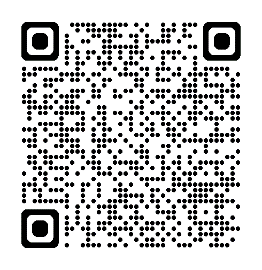
Family Hubs & Children’s Centres
A one stop shop for parents and carers to find information, ideas and support for your family, no matter what the age, culture or background of your children.
Visit the Bedford Borough Family Hubs & Children’s Centres website or scan the QR code below:
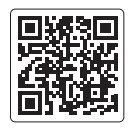
Visit the Central Bedfordshire Family Information Directory online or scan the QR code below:
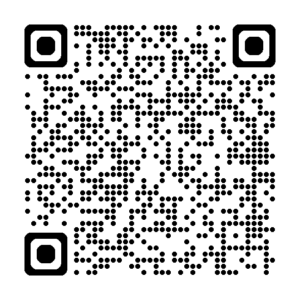
Community midwife Hubs
When you return home you will be seen by the Community midwifery teams:
Stotfold Hub, Monday to Friday, 8:30am to 5pm. Call 0300 300 8185
King’s House Community Hub, Monday to Sunday, 8:30am to 5pm. Call 07767 441563
Triage, call 01234 795805 if you have any concerns.
How to raise a Query, Concern or Complaint
At Bedfordshire Hospitals, we are committed to providing safe, compassionate, and high-quality care. If you have a query, concern, or complaint during your stay, please don’t hesitate to speak up. Your feedback helps us improve our services.
If you wish to raise an issue, please follow this escalation pathway:
- Speak to the Midwife in Charge – They are available on each shift and are your first point of contact for any immediate concerns.
- Ask to speak with the Ward Manager – If your concern is not resolved, the Ward Manager can provide further support and guidance.
- Contact the Patient Experience Midwife or Inpatient Matron – For more complex issues or if you feel your concern requires further attention, these senior staff members are here to help.
Further Escalation – PALS and Complaints
If you feel your concern has not been adequately addressed through the ward team, you may contact the Patient Advice and Liaison Service (PALS) or the Complaints Department:
- PALS offers confidential advice, support, and information. They can help resolve issues informally and quickly.
- If you wish to make a formal complaint, the Complaints Department will handle your concern in accordance with NHS procedures.
You can contact PALS or the Complaints Department by:
- Phone: 01234 795814
- Email: PALS.Bedford@bedfordhospital.nhs.uk or Complaints.Bedford@bedfordhospital.nhs.uk
- In person: Please ask a member of staff to direct you to the PALS office or provide a complaints form.
At Bedford, PALS is located along the main hospital corridor, near the Patient Experience Hub and Faith & Belief room. The office hours are Monday to Friday 8:30am – 4:30pm.
If you feel the PALS Officer can be of help to a patient, regarding a concern or a complaint, please refer them to the team, or contact extension 4624 and they will come to the ward to speak with the patient.
We value your feedback and are here to support you throughout your care journey.
